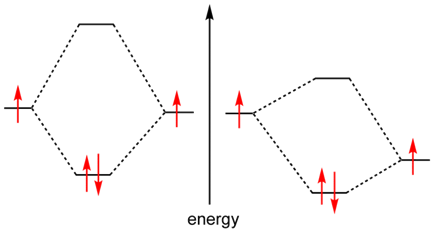ELECTRON PAIR BONDS
In chemistry, an electron pair contains two electrons that occupy similar orbital but have opposite spins.

Since electrons are fermions, the Pauli Exclusion Principle forbids these particles from having exactly similar quantum numbers. So the only way to occupy similar orbital, that is having identical orbital quantum numbers, is to be different in the spin quantum number. This limits the number of electrons in similar orbital to exactly two.
The pairing of spins is frequently energetically favorable and so electron pairs play a very large role within the chemistry. They can create
1. a chemical bond among two atoms
2. like a lone pair.
3. fill the atom's core levels.
Since the spins are paired, the magnetic moment of the electrons cancels and the contribution of the pair to the magnetic properties will usually be a diamagnetic one.
Even though a strong tendency to pair off electrons can be observed in chemistry, it is also achievable that electrons take place as unpaired electrons.
In the example of metallic bonding the magnetic moments also compensate to a large extent but the bonding is more common so that individual pairs of electrons cannot be differentiated and it is better to refer the electrons as a collective 'ocean'.
A very unique case of electron pair formation takes place in superconductivity: the formation of Cooper pairs.